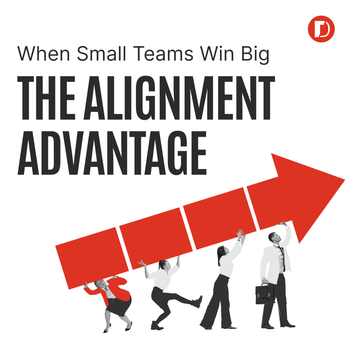7 Keys to An Effective Facebook Ad Strategy
by Ana Gotter • December 31, 2019
If you’re doing it right, an enormous amount of thought goes into planning, creating, and executing your Facebook Ad campaigns. There are so many steps to consider, and for those unfamiliar with the system, it can be so overwhelming you lose sight of what’s happening.
In order to succeed with Facebook Ads, you need to go in with an effective Facebook Ad strategy before you ever even open that “Create an Ad” window. Otherwise, it’s easy to get distracted and to get off track of what it is that you’re focusing on, which is whatever specific goal you’re optimizing for.
In this post, we’re going to discuss the 7 keys to an effective Facebook Ad strategy so that you can create high-performing campaigns. If you go down the checklist while developing the concepts and creatives for the ads, you’ll be in good standing with your campaigns quickly.
1. Understand Your Audience
This means two different things: Understand who your audience is in theory, and understand how to actually target them on Facebook.
Long before you ever even think about logging onto Facebook, you need to have a strong understanding of who your audience is. How old are they? What level of education do they have? What’s their income, their location, and their family life like? What are their pain points, their motivations, and their biggest needs? Create fleshed-out buyer personas, using audience segmentation to develop accurate customer profiles.
Once you do this, take a look at each audience segment and consider how you’ll reach them. Demographic targeting? Behavior or interest targeting? Retargeting or lookalike audiences?
Let’s say, for example, that I’ve developed a mobile app featuring a game that has all the appeal of sitting in a casino and pulling the lever on the slot machine. You pay in a few dollars, you pull the digital lever, and you can gain or lose points that you can use to play other casino-styled games. If you win, you get more points to keep playing, if you don’t, you need to shell out a little more to keep going. It’s like gambling, but not!
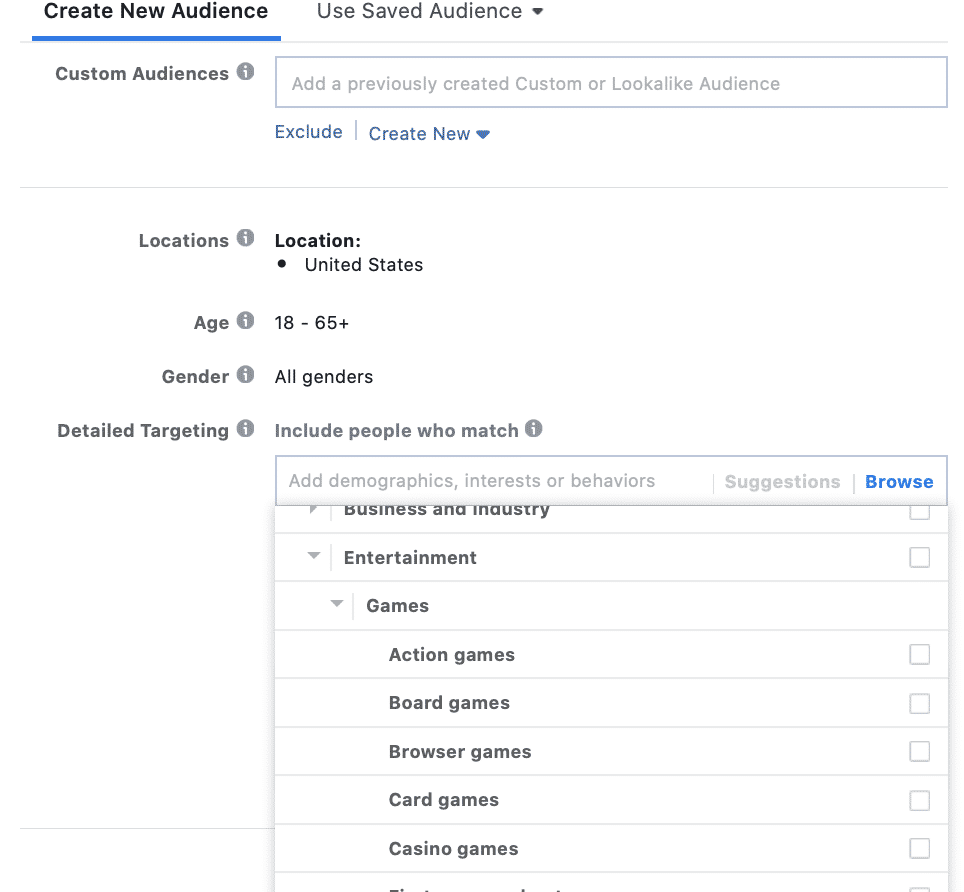
When reaching a cold audience, I’ll likely want to target users who like “Casino games.” Research may also find that people who enjoy this particular app skew heavily female, so I’ll add that in, and my app is only for iOS running on the latest operating system, so we throw that in the mix, too.
Remember that you can always test your targeting options, helping you find the balance between “narrow enough to be relevant and drive results” and “too niche to get real visibility.”
2. Choose the Right Ad Objective
Your ad objective matters on Facebook, and it’s not just about some centering your own thoughts about what you want to achieve with your campaign for simple categorization purposes. It actually has an impact on your campaigns.
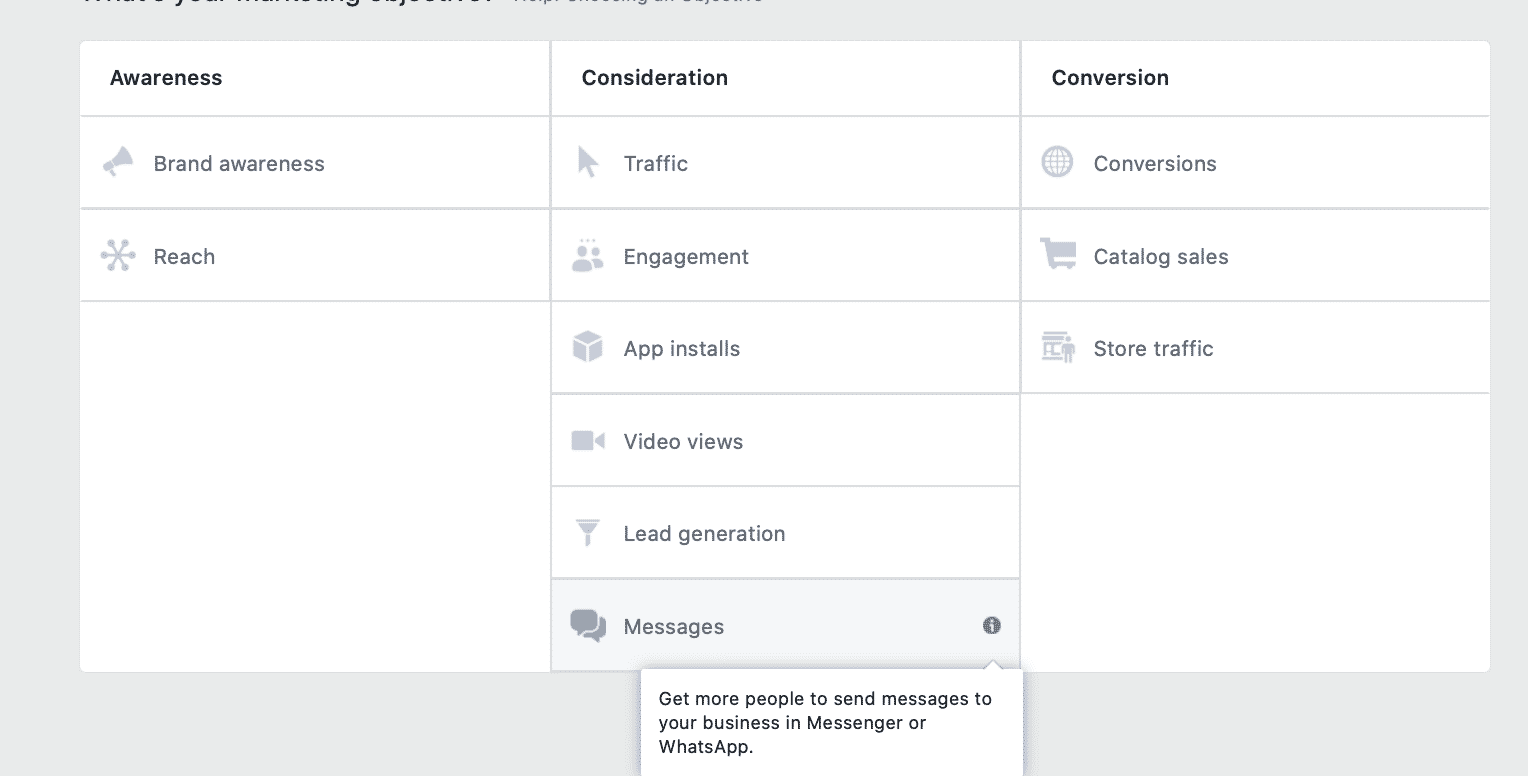
Your objective will shape what it is that you’re paying for to start. Traffic to your site is often paid for with link clicks (though you can change this), while video views are going to charge based on 10-second video views in most cases. This can drastically impact what your ads cost.
It’s also important to note that Facebook will automatically optimize your campaigns based on the objective you choose. If you want video views, they’ll show your video to users who have historically been more likely to stay put and watch the video. If you want lead generation, they’ll show the ad to users who have submitted forms in the past.
This the first decision you make, and it matters. Learn more about Facebook Ad objectives here.
3. Keep Pain Points and Emotional Appeals Central
You want to always remember the end goal here: to convince users that they need to take the action you want them to. That means understanding what each audience niche’s individual pain points are and how you can appeal to them. You’ll need to keep this in mind when choosing your images and video, copy, headlines, and more.
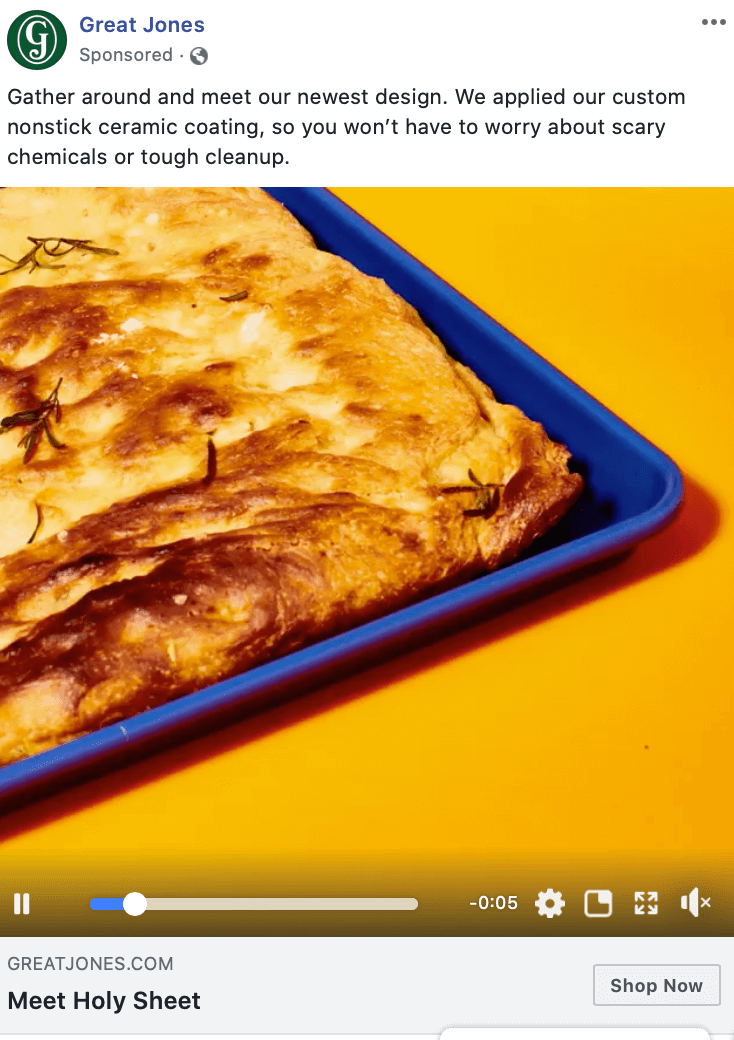
This is a great example. Great Jones is advertising their custom nonstick ceramic product, “so you won’t have to worry about scary chemicals or tough clean up.” This is a major issue with plenty of baking pans. You have to choose between tougher cleanup, which isn’t fun, or potentially toxic chemicals in the long-term, which also isn’t great. They quickly overcome objections and appeal to pain points at once.
4. Create Ad Funnels
You need ad funnels. Ad funnels are a key part of establishing an effective Facebook Ad strategy, and they’re a central part of driving real results.
Funnels are designed to engage users at different stages of the sales funnel with ads relevant to them, and then get them to the next stage. Videos introducing your brand are great for cold audiences who have never met you before, for example, but won’t do much for long-term customers who already know your brand story.
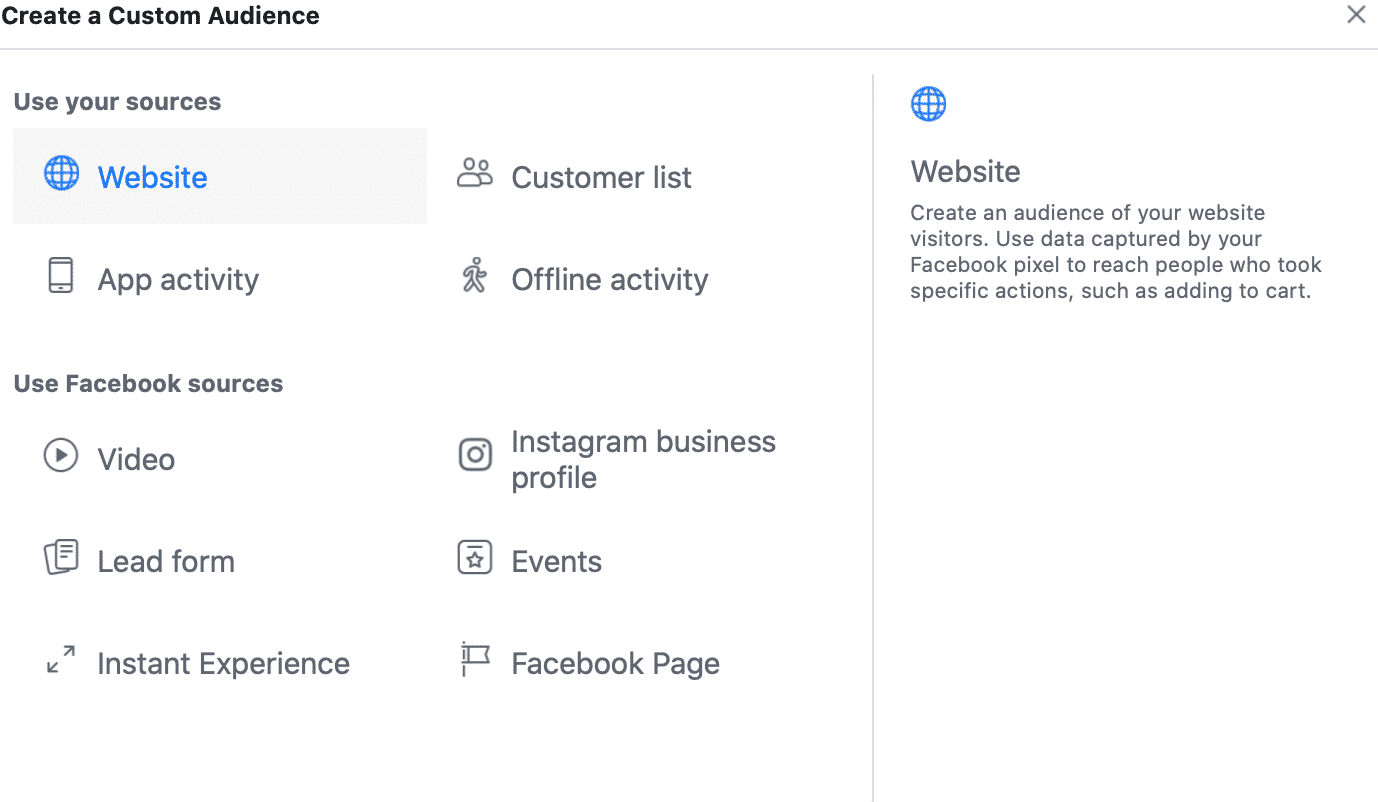
This does mean that you’ll need multiple ad campaigns in most cases to achieve significant results and maximize your ROAS. You’ll use retargeting to keep engaging users until they’re ready to purchase, leading to higher conversion rates in the long run.
You can read more about setting up an ad funnel here.
5. Choose Your Bid Wisely
Bidding is often treated as an afterthought when it comes to Facebook Ads strategy, but it shouldn’t be. Your bid is important to your overall strategy and campaign management, because it affects how much you’re spending on whatever it is that you’re optimizing for, impacting ROAS.
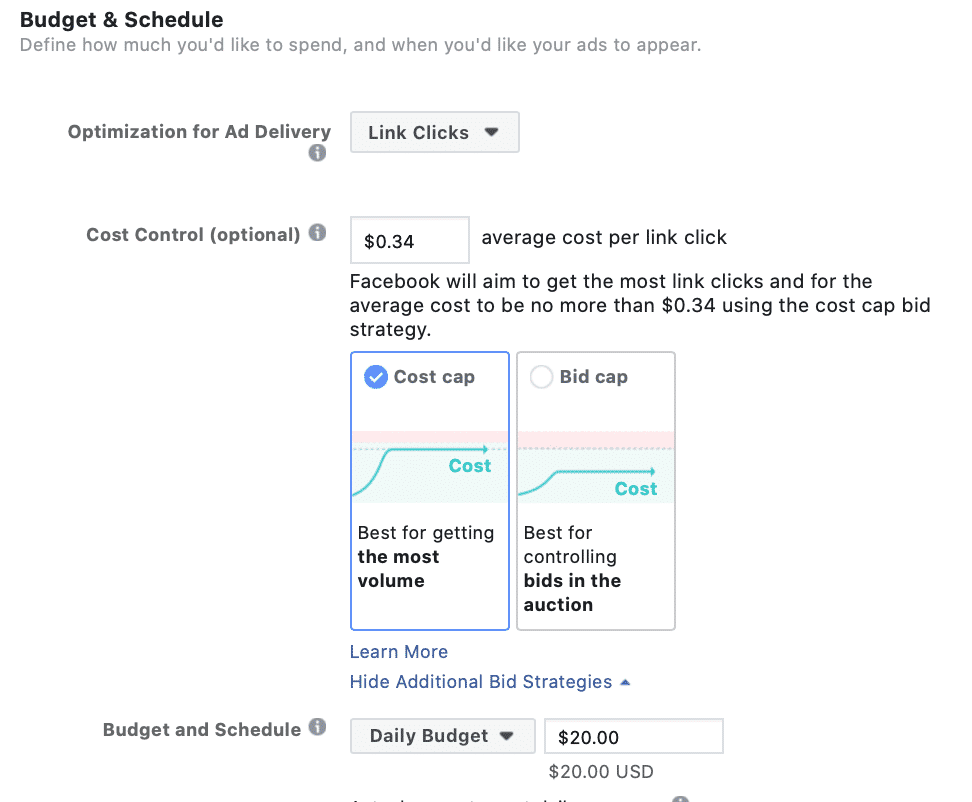
If you bid too much, you may get great placements, but you may not technically be able to afford them. Even if you can afford to spend $50 per day on one campaign, it doesn’t do you any good if it costs you $5 to acquire a customer and you can only pay $3 without losing money.
Facebook allows you to set target bids and bid limits. Target bids shoot for an average bid amount, meaning that they’ll go slightly over if they think they can get you a great placement with potentially high-value customers. Bid caps, however, are good if you’re firm on what you’re willing to pay for each acquired action.
You can learn more about bidding here.
6. Remember Mobile
More Facebook usage happens on mobile than desktop, and that’s not changing anytime soon. Because of this, it’s crucial to factor mobile-friendliness into your ad campaigns.
To start, you’re going to want to remember that mobile ads are only going to show three lines of ad copy before it gets cut off with a “Continue Reading” tag. This means you either need to keep your copy to three lines or less (and always preview a mobile placement to make sure it fits) or to front-load your copy with the “why this matters to you” and attention grabber upfront.
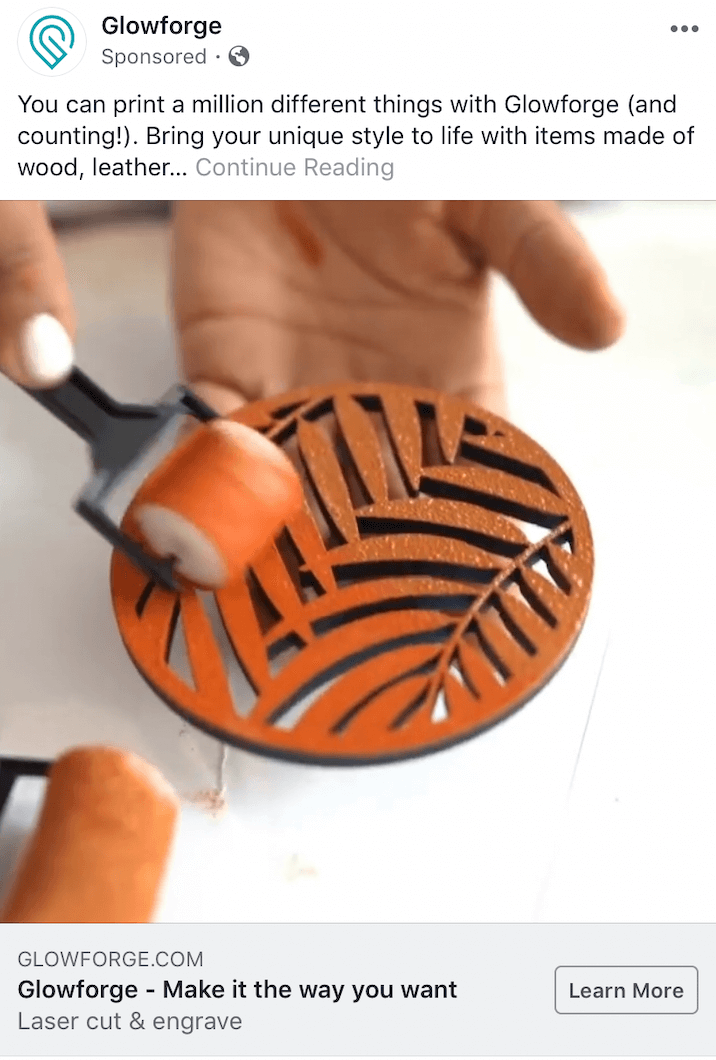
You’re also going to make sure that you want to get your image size right. The aspect ratio used to be 2:3, but is now 4:5; if it doesn’t fit exactly, it will be awkwardly cropped, which is the last thing that you want. Again, preview, preview, preview.
It’s also good to test and consider mobile-first formats like Story Ads, Collection Ads, and other Instant Experiences. Collection Ads, in particular, are something ecommerce businesses should focus on, as they have incredibly high conversion rates and mobile users are loving them.
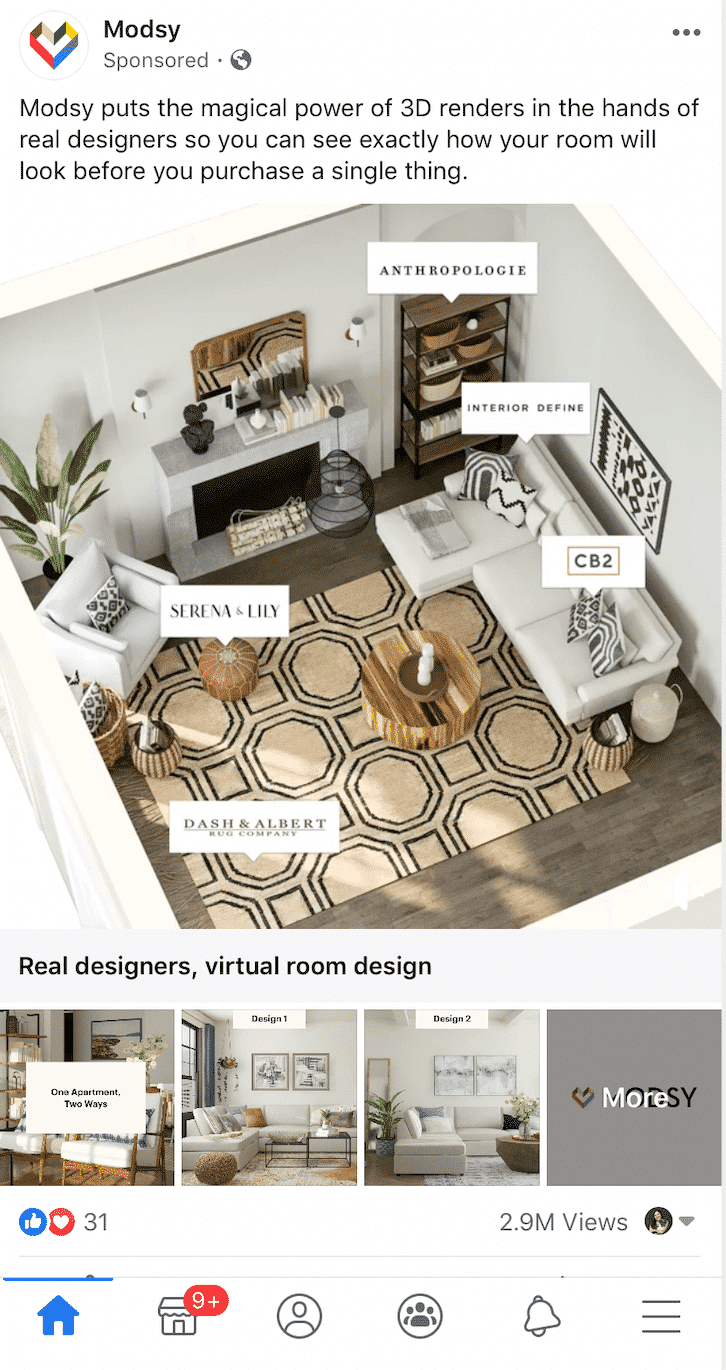
7. Test Everything, Always
Split testing should be a core part of your Facebook Ad strategy from the beginning. You want to go in with multiple creatives to test (including images and ad copy that can be mixed and matched), and you’ll want to split test different audiences, places, and delivery optimizations on their own campaigns, too.
Note that you’re only going to want to split test one in each campaign so that you can actually assess what’s effective and what isn’t.
Fortunately, Facebook’s native split testing feature is exceptional for this purpose. On the first screen, you can choose to enable native split tests, which allows you to easily enter in multiple audience criteria, creatives, placement options, OR delivery optimization choices so Facebook can test your theories and see what works.
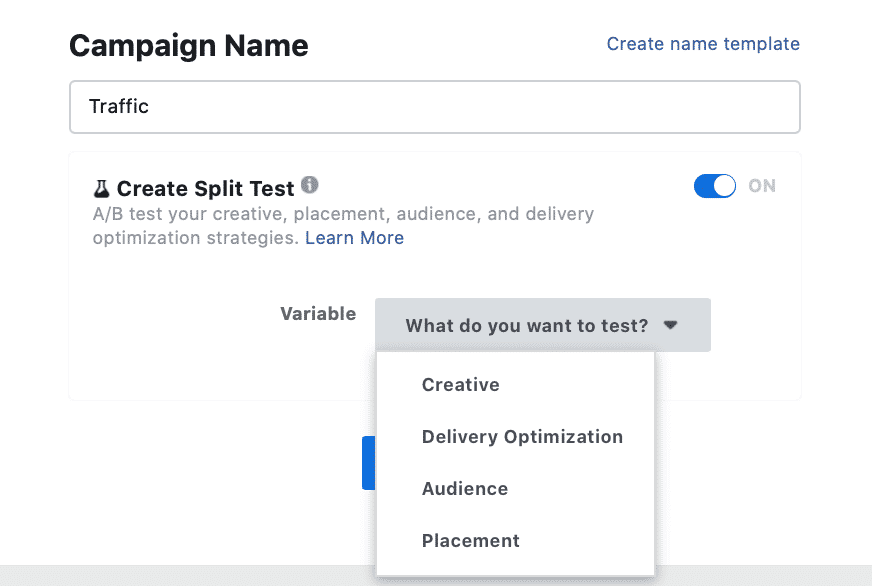
An important part of an effective ad strategy is versatility, and split testing gives you that leeway.
Final Thoughts
There’s so much that goes into a single ad campaign, which means that you need an effective Facebook Ad strategy to even get started. While it’s an involved process, it’s one that you don’t want to scrimp out on. If you do, you’re more likely to be hit with disappointing results that don’t live up to the campaign’s full potential.
And good news: If this sounds like too much work or something that you’re not interested in doing at all, there are agencies that can help! Including us! You can get in touch with us here to learn more about what we can do for you.
What do you think? Do you agree with our 7 key pillars to an effective Facebook Ad strategy? Did we leave anything out that you think is important? Share your thoughts and questions in the comments below!


